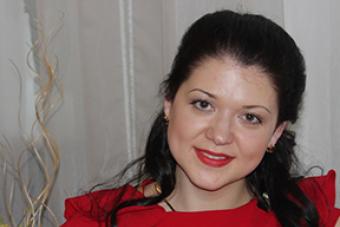Connecting post, connecting loop, half-column, half-single crochet, pull, hook, blind loop, blind loop, attach: - different names in different editions of the same element. If we connect a circular row, then in the texts we call it a “connecting column,” a “hook,” if we move along the tops of the previously connected columns of the bottom row to the beginning of the next row, we call it “connecting loops,” etc.
And a few more topics about knitting for beginners:
This is the densest, tightest and shortest (short) of all the loops that can be crocheted. If you knit with these loops, then try to control the thread tension so that the loops are loose; or use a hook bigger size.
To crochet it, one or two loops of the cast-on stitch or stitch of the previous row of the pattern are hooked, through which the working thread is pulled. This creates a new loop, which is threaded through the hook (main working) loop.
This technique creates a very dense and heavy canvas, so it is performed in drawings as a separate element. They also make collars and various edgings of product parts, which turn out to be very shape-resistant; they connect the sides of parts, the sides of square motifs.
(since it is called differently in different publications, I am posting several descriptions of it). In graphic diagrams, the connecting column is designated as an arc, a black triangle, or a black vp.
The connecting loop (post) is used in several capacities:
It is used to compact (gather) the edge of a slightly stretched fabric, thereby eliminating defects;
As the lowest element, it is used to attach chains of air loops (arches). This connection looks the neatest. Such a connection is appropriate both in patterns (for example, in a bias net), and when connecting circular rows when knitting with a pipe, and when making motifs. They are used to tighten the 1st and last column of a row when knitting in the round, move in patterns to the beginning of the next row along the tops of the columns of the bottom row, move along the contour of the pattern when designing armholes, necklines or sleeve caps, etc.






Examples of patterns where connecting loops are returned to the point of knitting subsequent rows along the tops of the columns of previously knitted rows (please note that many magazines on the patterns miss this point and do not indicate such designations to the knitter):


When making armholes: when working on the pattern on the front side, along the tops of the specified number of columns of the bottom row, we move to the beginning of rounding the armholes with connecting loops. In the description they write: “... close the number of loops (columns).” Then we knit stitches that increase to the height of the stitches in the working row. For example, to the height of dc from the connecting loop, we knit a dc, a half-stitch and only then dc to get smooth transition. We knit on the front side, and at the end of the row we do not knit enough of the number of loops (stitches) indicated in the description, lowering the row from CH to connecting loops.
Slip Stitch Crochet is also known as Bosnian Crochet or SlipStitchCrochet.

Knitters know that there are no random or insignificant stitches when knitting. Each loop performs its task. The smallest, but very important, is the connecting crochet loop. Depending on the task facing it, it is called differently - deaf, attached, blind, connecting.

On the diagrams it is indicated by a round dot or a stroke. Due to the fact that this is the lowest loop, it is used to seal products in the right places. It is used for knitting product parts that should be less elastic than the main fabric. For example, collar, placket, cuffs.
With its help, a clearer contour of the neckline, sleeve hem, and armhole is indicated.

Knitting with a connecting loop is called Bosnian. In this case, the product turns out to be very dense, almost inextensible.
The video will clearly demonstrate the method of knitting a connecting loop:
To knit a connecting loop, insert the hook into the desired place, pull out the working thread and pull it through two loops at once.
Connecting loop functions:
- invisible connection of parts in crochet;
- a seam of connecting loops for sewing a knitted product;
- when knitting in circles, there is an even transition from row to row;
- strengthening the edge of the product;
- used when decorative finishing knitting.
It also acts as the main technique when knitting some products.
Small and remote
Let's look at all the options for using a connecting loop using examples with photos:
- connection of parts, crocheted.
Separately knitted elements that are connected to each other using a connecting loop to form a large web. For example, plaid, skirts and tops made of ribbon lace.
Such a connection can be invisible, or it can be decorative at the request of the master.
- stitching with a connecting loop, knitted or crocheted products.


Used when sewing thin knitted or openwork fabrics. This seam does not stretch and perfectly maintains the shape of loose products. You just need to remember that such a seam is quite voluminous, so it needs to be done with a thin thread.
- joining rows when knitting in the round.
To complete the row evenly and imperceptibly, a connecting loop is used in circular knitting. With this method of joining, the circle turns out to be very beautiful. All rows are strictly parallel to each other.

- strengthening the edge of the product.
To protect the edge of the product from stretching and deformation, we process it using connecting loops.
To do this, knit 1 stitch from the first loop of the edge. P.; then insert the hook into the 3rd stitch from the chain stitch and pull the working thread through both loops. So we knit until the end. After such strengthening, we obtain a dense edge of the product. This is especially important when you plan to use large and massive buttons.
And if you need to quickly tie a string or lace, then a chain from c. The item must be tied on both sides with connecting loops.


- decoration of the product with a decorative chain of connecting loops.



It happens that the edge of a knitted fabric looks sloppy and boring. In this case, tying with connecting loops in a contrasting color will be an excellent finish to the product, which will also keep the edge within the required limits.
Using a chain of connecting loops, like a pencil, you can draw any patterns on the canvas. It is convenient to darn woolen socks with such a loop. The patch is invisible and very durable.
Bouquet of white chrysanthemums
Such a small and simple element as a blind loop has not only practical and applied applications. Using it you can make interesting interior crafts, as well as decorate clothes or accessories with flowers.
Let's knit a chrysanthemum according to the proposed pattern:
For the flower we knit several round tiers different sizes crocheted with a fringed edge.
- 1st row: to knit one tier, you need to tie a sliding loop with the 6th st. without nac.;
- 2nd row: dial 4 v. p. and 1 p. rise and tie a chain of 4 sts. p. from top to bottom with connecting loops; we knit up to the 1st row, using a connecting loop we make the transition to the next loop and again cast on a chain of 4 sts. p. and tie it with connecting loops from top to bottom; and so on in a circle until the first petal;
- we knit the next tiers larger than the previous one;
- We place the finished parts on top of each other in descending order and fasten them together.
If necessary, make a stem and leaves. The flower is ready. Using the same pattern, you can knit a bouquet of dandelions. This little helper, the connecting loop, is so widely used in creating knitted items.
If you show your imagination, there are many more options where this loop will be useful.
Video on the topic of the article
A few more video lessons for beginner knitters on how to properly use a connecting loop.
Let's consider connecting post. I would like to note right away that this is the same single crochet. They are performed in the same way, but the purpose is different.
A half single crochet is an element of the pattern, and a connecting stitch is a way of connecting rows. Why is one a column and the other a half-column? A connecting column is a completed element, and a half-column is, as it were, a column that is not fully knitted. This is the difference.
Naturally, this is difficult to understand in theory, so I suggest moving on to practice! 🙂
How to tie a connecting post?
Let's look at an example of connecting two rows using a connecting post. Let's say we have a row that needs to be closed (do not pay attention that I have a circle connected, this is how all connecting columns are made):
1. Since the beginning and end of the same row are usually connected, the edge with which we need to connect consists of lifting air loops. We thread the hook into the last (upper) lifting air loop.
I draw your attention to the fact that in some cases they knit without counting the lifting chain stitches per row and then insert the hook into the first loop from the first stitch of the row


3. We pull the same loop (which we pulled from the lifting chain loop) through the loop on the hook. You will get this connection, the location of which only you now know, and only because you just tied it and the loop on top, like a beacon, points to the joint :)

In the diagrams, the connecting column is displayed as a black filled dot
How to crochet a half double crochet?
If while knitting, in the description or pattern you come across an unknown animal - a single crochet, do not be alarmed, now we will bring it out into the open! 🙂
Let’s say the description contains a single crochet:






In the diagram, a half single crochet looks like this:
This is how you and I made sure that these two basic elements of crochet are performed in the same way.
To be honest, when drawing up diagrams, I most often use the designation of a connecting column, even for half double crochets, since the stripes greatly overload the diagram and become more difficult to read.
The next lesson, in which you and I will use previously learned skills and the connecting column we just learned:
Don't miss the release of new training lessons!
Be the first to know about new products!
The connecting post has the smallest height of all crocheted elements, therefore it is extremely rarely used when knitting large parts. However, it is indispensable when closing rows in circular knitting, making decreases and binding on the edges of products, knitting Irish lace and crafts in the “freeform” style, a combination of individual motifs. Let's take a closer look at how to correctly knit a connecting post using the simple hook and connect knitted details with his help.
Learning to crochet a connecting stitch with a single crochet when knitting straight
Most often in knitting, a single crochet stitch is used. For the sample, you need to dial a chain of air loops of the required length. Insert the hook into the first stitch of the row. Use it to pick up the working thread and bring it through two loops at once. Repeat until the end of the row. You will get a fairly dense and elastic lace, as in the photo below, which can be used for ties on knitted items.
If desired, you can continue working by knitting the subsequent rows with a connecting post. In this case, the hook can be inserted both behind the front wall of the loops of the previous row, and behind the back. In the first case it will be dense mesh pattern, in the second - horizontal braids.
However, knitting a whole fabric with connecting stitches alone is used quite rarely, since the product turns out to be too dense and heavy. Most often, this technique is used to tie the edges of products, protecting them from possible deformation during operation and making them more neat.
Connecting stitch when knitting in the round.
The connecting post is used to close a chain of chain stitches when knitting in the round. To do this, you need to cast on several loops and insert the hook into the very first link of the chain, pick up the working thread and pull it simultaneously through the two resulting loops, getting the next working loop.
Next we tie the ring in the classic way- single crochet or single crochet. At the end of the row, similarly pass the hook under the lifting loops of the first row, grab the thread and pass it through two loops, carefully and imperceptibly connecting the beginning and end of the row. We repeat this procedure in all subsequent rows.
Conn. double crochet.Connecting double crochets are used, as a rule, only in straight knitting to give the canvas greater thickness, density and decorative convexity. To do this, before inserting the hook into the next loop of the row, the working thread is wrapped once around the hook, forming a yarn over, and then the thread is grabbed and passed through three loops on the hook at once. Such posts are used quite rarely; they are usually used to make laces or binding for parts from stretchable and deformable threads.
Crochet motifs.As the name suggests, the main purpose of the connecting post is to connect various elements knitted product. This is usually necessary when knitting individual motifs. There are many ways to connect them. Let's look at some of them.
Method number 1.To tightly connect square or hexagonal motifs, they are placed right sides to each other and their edges are knitted with additional thread, passing the hook through the edge half-loops. During the knitting process, it is necessary to monitor the tension of the thread so that the product does not deform, and also to prevent the motifs from shifting relative to each other.

Round or hexagonal openwork motifs can be connected using arches of air loops, as shown in the diagram below. To do this, we knit one motif entirely, and begin to attach the second to it during the tying process, making connecting posts in the right places. The third and subsequent motifs are connected simultaneously with two or more neighboring elements.
Method No. 3.In a similar way, you can tightly tie the elements. To do this, we knit one motif entirely, and attach the second to it in the process of tying with double crochets, passing the hook through the edge half-loops of the adjacent element.

The knitted fabric turns out to be very light and airy when connecting the elements using pico - short air chains of 3 air loops knitted into one base. To do this, we knit one motif entirely, and attach the second to it during the tying process by alternating stitches with picots. We pass the air loops of the second motif through the picot of the first and fasten them using a connecting post, as shown in the diagram below.
Method No. 5.You can sew parts with a smooth edge using single crochet stitches. To do this, you need to align the edges to be joined and insert the hook into the corresponding half-loops using an additional thread to make an invisible, dense and elastic seam, as shown in the diagram below.

Video on the topic of the article
We invite you to watch the video lessons below on crocheting techniques and how to use a connecting post.
Crocheting is a whole world of needlework with its own rules and characteristics, once entered it is impossible to go back. This craft rewards craftswomen with beautiful and original things; you just have to learn its basics - stitch knitting.
In order to feel confident in the future, beginners need to learn how to crochet the simplest elements, which makes it possible to create fabrics of any complexity with a wide variety of patterns.
Master class for beginners on crocheting stitches
Any pattern created by crochet, from the simplest to the lush and openwork, is created by combining air loops and several types of columns. If you learn how to knit them perfectly, you can safely start crocheting things of any complexity.
What are the main types of crochet stitches?
- Single crochets;
- Double crochets;
- Half columns;
- Double crochets;
- Relief columns;
- Lush columns.
Single crochet

This type is considered one of the most used methods of knitting stitches - and therefore a basic skill necessary for all craftswomen. The method of crocheting single crochet stitches allows you to get a dense fabric of low stitches that is not highly elastic.
Popular articles:
This knitting technique offers several options for knitting loops: behind the front wall of the loop, behind the back wall and behind both walls. Depending on this, the pattern on the canvas will differ. Often knitting single crochets involves knitting a loop on both walls(in other words, for both half-loops of the upper braid) - this is the option that is often assumed in all knitting patterns. Let's considerhow to crochet a single crochet using the example of a step-by-step diagram:
We knit a chain of 20 chain stitches plus 1 lifting loop. We knit the first stitch into the second chain stitch from the hook. Insert the hook under the two walls of the loop, pick up the thread and pull it through the loop: two loops have formed on the hook (photo 1). Now we pick up the thread again and pull it through both loops. There is one loop left on the hook. We knitted a single crochet (photo 2).

Next, we knit the first row of stitches, but grab the air loop from the front wall - it’s more convenient to knit the initial row this way (photo 3). We turn the work over, knit one lifting loop, and then a row of stitches, picking up the loops on both walls.
In order for the edge of the fabric to be even, it is important to knit the first and last loops of the row correctly. Often, especially if they are knitted with thin threads, they skip the first loop of the row and the stitches of the next row are knitted directly into the second loop, or they forget to knit the last loop of the row. Be careful and count the bars while you study. You should always get 20 columns (lifting air loops are not included in this number) (photo 4).

Concerning two other ways of knitting single crochets, this is done as follows:

 Fig. 1: Picking up the front wall of the loop. Fig. 2: picking up the back wall of the loop.
Fig. 1: Picking up the front wall of the loop. Fig. 2: picking up the back wall of the loop. In any of the selected methods of casting single crochets, the first stitch in the row is always knitted on both sides of the loop so that the edge is smooth and quite dense.
Half column
Knitting with half-stitches or connecting stitches is not so common, since the fabric from these loops turns out to be very dense and stiff. The half-columns turn out to be very low. They are often used to connect fragments of lace sewing, move from one row to another when knitting in the round, and they are also used to secure and process the edges of the fabric at the final stage of knitting.
There are two ways to knit with a half-stitch:
- half crochet stitch - also called a strong stitch;
- half double crochet - that is, connecting.
Let's consider first, how to crochet a half double crochet.

Let's start by knitting a chain of air loops. The number of air loops should be equal to the number of half double crochets plus 2 loops for lifting. When the chain is ready (photo 1), yarn over the hook (photo 2),

insert the hook into the third loop of the chain from the hook (half double crochet corresponds to 2 lifting loops), grab the thread (photo 1) and pull out a new loop (now we have three loops on the hook) (photo 2),

grab the thread again (photo 1) and knit 3 loops on the hook in one step. It turned out half double crochet(photo 2).

We continue to knit a row of half double crochets. At the end of the row we knit 2 air lifting loops (these loops are the first half-column of the next row), turn our product over and continue knitting (photo 1). This is what the finished half double crochet looks like (photo 2).

Now we'll find out how to crochet half crochet or connecting stitch.

It is difficult to knit half stitches starting from a chain of chain stitches, so cast on 20 chain stitches plus 1 lifting loop and knit several rows with single crochets on both sides of the loop. Next, we will connect several rows of connecting posts.
A lifting loop is not required in this case. Therefore, having knitted a row of single crochets, we turn the work over and immediately knit a half-dome into the first loop. We insert the hook under both walls of the loop, pick up the thread and pull it through the loop and then immediately into the loop that is on the hook.
The half-column is knitted in one step - and so on until the end of the row. Turn the work over and knit the next row in the same way. To make knitting easier, do not tighten the loops, make them wide enough, especially for the first and last loops of the row.

Double crochet

The double crochet is considered one of the most frequently used elements among all types of double crochets. It is knitted quite quickly, and the stitch itself is twice as tall as a single crochet.
So let's consider step by step instructions how to crochet double crochet.
We knit a chain of air loops. The number of chain stitches should be equal to the number of double crochets plus 3 stitches for lifting. When our chain is ready, we yarn over the hook (photo 1), insert the hook into the fourth loop of the chain from the hook (a double crochet corresponds to 3 lifting loops), grab the thread (photo 2) and pull out a new loop, we now have 3 loops on the hook (photo 3) grab the thread (photo 4) and knit 3 loops on the hook in pairs in 2 steps, i.e. first we knit 2 loops (we will have 2 loops left on the hook) (photo 5) then grab the thread again (photo 6) and knit 2 more loops. This is how we did it double crochet (photo 7). We continue to knit a row of double crochets (photo 8). At the end of the row, we will knit 3 lifting air loops (they will be the first stitch for the next row), turn our product over and continue knitting (photo 9).

With two yarn overs

The double crochet stitch allows you to achieve a very high loop. This type of columns is used to obtain openwork free canvases.
After a chain of chain stitches, the number of which should be equal to the number of double crochets plus 4 loops for lifting, make two yarn overs on the hook (photo 1), insert the hook into the fifth loop of the chain from the hook (a double crochet corresponds to 4 lifting loops), grab the thread (photo 2) and pull out a new loop, we now have 4 loops on the hook (photo 3). We grab the thread (photo 4) and knit 4 loops on the hook in pairs in 3 steps, i.e. first we knit 2 loops (we will have 3 loops left on the hook) (photo 5) grab the thread again (photo 6).

and knit 2 more loops (we will have 2 loops left on the hook) (photo 7), grab the thread again (photo 8) and knit the remaining 2 loops. We knitted a double crochet stitch (photo 9). We continue to knit a row of double crochets (photo 10). At the end of the row we will knit 4 lifting air loops, turn our product over and continue knitting.

Raised
Very beautiful view knitted posts, which allow you to achieve a convex texture of the fabric - a relief post with a crochet crochet. Ornaments and patterns are knitted with similar columns. And although the embossed column resembles a simple double crochet in execution, it has its own characteristic features. It differs in the way it is attached to the posts of the previous row: the embossed column is not knitted through the loops of the previous row, the hook is inserted under the columns themselves. In addition, it is important to remember that you begin to knit embossed stitches only after you have made at least one row of double crochets or a simple stitch.
There are two types of relief columns:
- embossed face columns located in front of work - "convex";
- embossed purls located behind the work - "concave".
How they differ and how to crochet them - let's look at them step by step methods knitting in photo tutorials.
Convex relief columns

We knit two rows of simple double crochets. Then we yarn over the hook (photo 1), insert the hook from the front side from right to left, under the double crochet of the previous row (photo 2), grab the thread (photo 3), and pull out a new loop (there will be three loops on the hook) (photo 4 ), then knit as a regular double crochet, knitting loops in pairs in two steps, i.e. grab the thread and knit two loops, grab the thread again and knit the two remaining loops (photo 5). When crocheting a double crochet “before work”, such a stitch is called a raised knit stitch or “convex stitch”.

Concave relief columns

We make a yarn over (photo 1), then we insert the hook from the wrong side from right to left (photo 2), clasping the leg of the double crochet of the previous row (photo 3), grab the thread (photo 4) and pull out a new loop (photo 5). We knit the loops in pairs in two steps, as when knitting a regular double crochet, i.e. grab the thread and knit 2 loops, grab the thread again and knit the 2 remaining loops (photo 6). When crocheting a double crochet “at work”, such a stitch is called a relief purl or “concave”. Similarly, embossed single crochets, embossed half double crochets, etc. are knitted.

Lush

Beginning needlewomen should definitely learn how to crochet a lush column. This type of columns allows you to achieve an unusually beautiful openwork relief pattern, which is also known as “puffs”. In addition, the final version is similar to the “bump” pattern. Lush columns are knitted with half double crochets, and the more half double crochets are knitted into one loop, the more magnificent the column. To knit lush columns follows from light and soft yarn, which will take much more to make this pattern than other types of stitches.
According to our scheme, we cast on a chain of chain loops, make a yarn over (photo 1), insert a hook 6 loops from the chain from the hook and pull out a long loop (there are now 3 loops on the hook) (photo 2), yarn over again (photo 3), insert a hook into the same base loop, grab the thread and pull out another long loop (we have 5 loops on the hook) (photo 4), yarn over again (photo 5), insert the hook into the same base loop, grab the thread and pull out another one again a long loop (there are now 7 loops on the hook) (photo 6). Next, we grab the thread (photo 7) and knit all the loops on the hook in one step (photo 8). The result was a magnificent column. Next, tie 2 ch. (according to the diagram) and knit lush columns in the same way (photo 9).

Lush columns with a closed top
 Fig. 1 - lush columns with an open top. Fig. 2 - lush columns with a closed top.
Fig. 1 - lush columns with an open top. Fig. 2 - lush columns with a closed top. Sometimes lush columns are knitted with a closed top. They are knitted in the same way, only they are finished in 2 steps: we knit the same half double crochets, pulling out long loops, then we grab the thread (photo 1) and knit all the loops except the first working loop (2 loops remain on the hook) (photo 2), grab the thread again and knit the two remaining loops (photo 3), then knit 2 ch. and knit lush columns in the same way (photo 4).

Video lesson
Video tutorials will help beginners master the master class on crocheting stitches.
Video “crocheting stitches”





